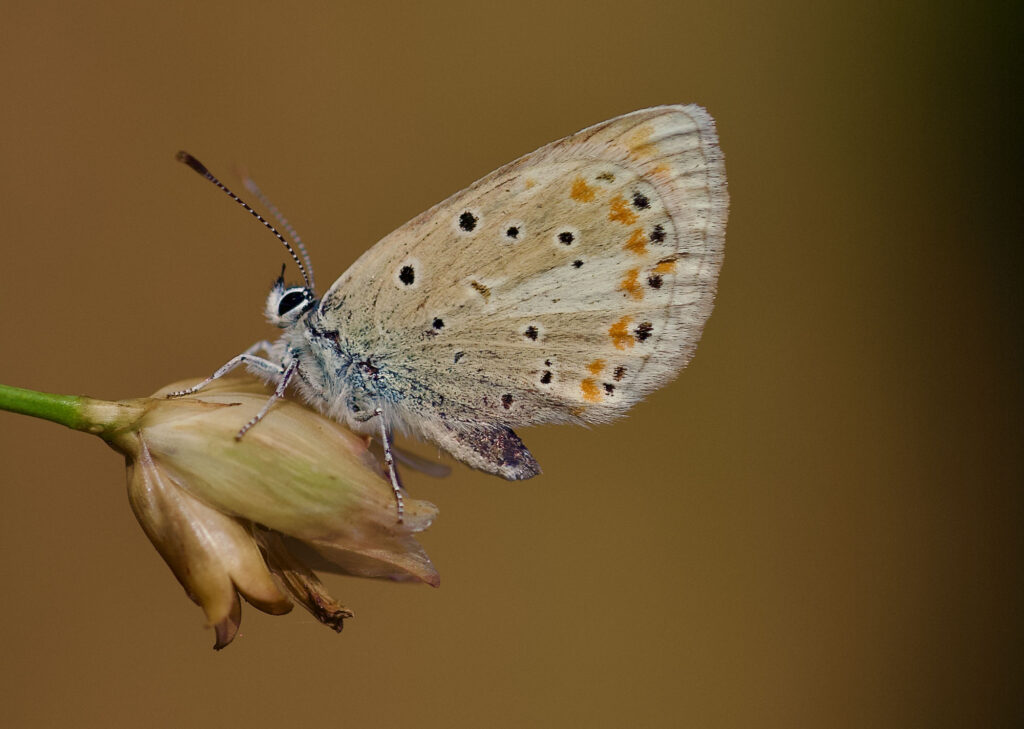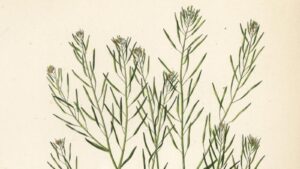
The Atlas blue butterfly, scientifically known as Polyommatus atlantica, has recently captured the attention of scientists worldwide due to its record-breaking 229 pairs of chromosomes. This discovery, made by researchers at the Wellcome Sanger Institute and the Institute of Evolutionary Biology in Barcelona, is shedding light on evolutionary mysteries and offering potential insights into human health, particularly cancer research.
This butterfly stands out as the multicellular organism with the highest number of chromosomes ever recorded. In stark contrast, many of its relatives typically possess only 23 or 24 pairs. The findings, published in the journal Current Biology, reveal that this increase in chromosome count resulted from chromosomes splitting into smaller sections over time, rather than being duplicated.
Unraveling the Genetic Puzzle
The first genomic analysis of the Atlas blue butterfly has produced a high-quality reference genome, enabling researchers to compare it with other butterflies and moths. This comparison is crucial for understanding how species diversify and evolve over millions of years. The study’s results provide a foundation for exploring why such an unusually high chromosome count evolved and what implications it might have for the species’ adaptation and survival.
According to the research, the chromosomes of the Atlas blue butterfly have been split at points where the DNA is less tightly wound. This means the genetic information is essentially the same but is divided into smaller sections. The researchers estimate that this change occurred over roughly three million years, a relatively short period by evolutionary standards.
Insights Into Adaptation and Conservation
Understanding the genetic makeup of a species like the Atlas blue butterfly allows scientists to predict how it might respond to environmental changes, such as global warming. This knowledge could guide conservation efforts and inform research into developing more resilient crops. The butterfly, found in the mountain ranges of Morocco and northeast Algeria, is now confirmed to have the most chromosome pairs among animals.
Changes in chromosome numbers are believed to contribute to the formation of new species and aid in environmental adaptation. The group to which the Atlas blue butterfly belongs includes many closely related species that evolved in a relatively short time. The research suggests that splitting chromosomes may provide greater genetic diversity, allowing for more frequent genome shuffling, which could be beneficial for rapid adaptation. However, the complexity of having many chromosomes might also make species more vulnerable to extinction.
Links to Human Health
The implications of this research extend beyond evolutionary biology. Chromosomal rearrangements are also observed in human cancers. Studying these processes in the Atlas blue butterfly could lead to breakthroughs in understanding and potentially mitigating similar phenomena in cancer cells.
Dr. Roger Vila, senior author at the Institute of Evolutionary Biology, stated, “Breaking down chromosomes has been seen in other species of butterflies, but not on this level, suggesting that there are important reasons for this process which we can now start to explore.”
Dr. Charlotte Wright from the Wellcome Sanger Institute emphasized the collaborative nature of this research: “Thanks to Roger Vila, who had previously worked with his colleague to find and identify this elusive butterfly, we were able to sequence this species, highlighting the collaborative nature of science.”
Future Research and Implications
This groundbreaking research raises several questions for future exploration. By further investigating the Atlas blue butterfly’s genome, scientists hope to uncover whether any genes have been lost or preserved, offering deeper insights into butterfly biology and evolution. The study also sets the stage for understanding how chromosomal changes impact behavior and species formation.
Professor Mark Blaxter from the Wellcome Sanger Institute remarked, “Genomes hold the key to how a creature came to be, but also, where it might go in the future. Understanding this process in the Atlas blue butterfly could help find ways to limit or stop chromosomal rearrangements in cancer cells.”
The research, titled “Constraints on chromosome evolution revealed by the 229 chromosome pairs of the Atlas blue butterfly,” was published in Current Biology. The study was funded by the Wellcome Trust, underscoring the importance of collaborative efforts in advancing scientific knowledge.





